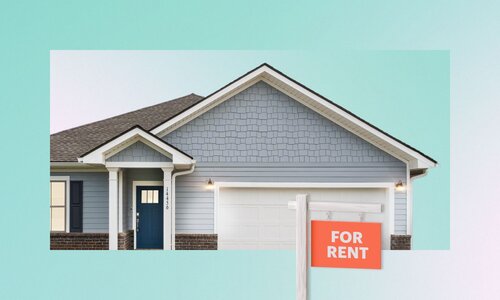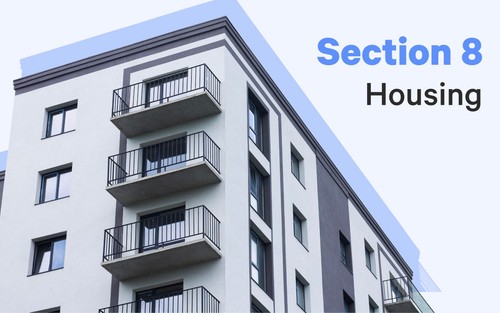As we enter a period of market volatility, lenders, homeowners, and real estate investors are getting creative with their financing options. One option in markets challenged to qualify buyers is a wraparound mortgage. It’s hard to find statistics about how many homes are transacted with a wraparound mortgage because it’s so uncommon. So what are they, and what do they entail?
This blog post will explain everything you need to know about wraparound mortgages, from how they work to who benefits.
What is a wraparound mortgage?
First, we need to understand traditional financing. Generally, it’s straightforward: a buyer applies for a mortgage loan from a lender, whether an FHA loan, fixed-rate or adjustable-rate mortgage. The mortgage lender approves the loan with agreed-upon terms and extends financing. The buyer will make monthly payments for the duration of the loan terms or until they sell the home and pay off the mortgage. The lender carries a lien on the house until the mortgage is paid off and can initiate foreclosure if the borrower stops making their agreed-upon payments. These are considered traditional loans.
A wraparound mortgage is a secondary type of financing extended by the seller. The buyer agrees to take over the existing mortgage and adds the amount of money on top of it, usually the new purchase price. The wraparound mortgage becomes a second or third mortgage on the same property. It’s also known in the industry as a carry-back mortgage or a wrap loan.
The homebuyer makes monthly payments to the seller, usually at a higher interest rate than the first loan. The seller agrees to make all the original monthly payments to the lender and can do what they wish with any extra income.
Who uses a wraparound mortgage?
While wraparound mortgages aren’t for everyone, they can be a creative way to finance a property.
A wraparound mortgage generally happens when someone can’t pay off an existing home loan. For example, they might have gotten an adjustable-rate mortgage that’s about to reset at a higher interest rate. In this case, the seller may not be able to afford the new monthly payments and would need to sell their home.
What if the home seller can’t find a buyer that can qualify for a traditional loan? Perhaps the buyer’s credit score is too low, or they don’t have a significant down payment. Owner financing through the wraparound loan could be an incentive to attract buyers.
Wraparound mortgages also tend to be more interest when home loan interest rates are higher. That’s because when mortgage rates are lower, low-income buyers are more likely to qualify for and afford traditional financing options.
The property may be in a rural or underserved area with few lending options.
Real estate investors can also offer a wraparound mortgage to incentivize a homeowner, as they’ll pay off the first mortgage and receive extra money each month.
How do wraparound mortgages work?
Wraparound mortgages can be complex and risky, so it’s essential to speak with a qualified financial advisor before taking out this type of loan.
The only loans that can become a part of a wraparound mortgage are assumable loans. A conventional loan is not typically assumable, but an FHA, USDA, or VA loan is.
A wraparound loan is a form of seller financing. That’s because the seller acts as the lender and offers financing terms to the buyer. Sellers often charge a higher interest rate on the second mortgage, which helps them cover their original loan payments plus profit with each monthly installment.
The wraparound mortgage requires the buyer and seller to agree on a down payment, interest rate, closing costs, and loan amount. They’ll then sign a promissory note detailing the wrap loan terms.
Not only do the buyer and seller have to agree to the terms of the wraparound mortgage, but the seller also needs lender permission before continuing with the loan. The lender may have a due-on-sale clause, which means the entire original loan amount is due when the seller initiates the wraparound loan. This could prevent loan approval.
After all, parties agree, the title might be transferred immediately to the buyer or after the seller finishes loan repayment. Once the home is titled under the new owner, possession of the property is officially considered the buyer’s.
When the sale is finalized, the seller is no longer the home’s legal owner. The buyer makes monthly payments to the seller, who then use that money to make payments on the first mortgage. Suppose the seller can’t or stops making these mortgage payments on time. In that case, the buyer will lose their home ownership through foreclosure proceedings.
An example of a wraparound mortgage
A seller has a mortgage balance of $200,000 with an interest rate of 5% on a home worth $400,000. A buyer is interested, but they can’t qualify for traditional financing.
To protect their investment, the seller agrees to a $450,000 wraparound mortgage with a $50,000 down payment and an interest rate of 7%. With this arrangement, the seller can keep the extra $50,000 and make money off the extra 2% interest.
Benefits of a wraparound mortgage
Profit is not the only reason a seller may agree to a wraparound mortgage. They can assist sellers struggling to sell their homes in challenging real estate markets. Making the home accessible to those who don’t qualify for a traditional mortgage opens up the pool of buyers.
For buyers, this type of loan can make qualifying easier and be more flexible with what they purchase, allowing them to buy a home that would otherwise be unattainable. New buyers may not have the credit history, down payment, or meet income requirements to open a new mortgage.
In some cases, depending on what’s negotiated, the buyer may be able to purchase the property for just the remaining balance plus a little extra, and not necessarily its fair market value. That leaves the buyer with the potential to profit when they decide to sell, which is why wraparound mortgages can work to buy an investment property.
Drawbacks of a wraparound mortgage
The home seller and buyer both assume risks in agreeing to a wrap loan.
With a wraparound mortgage, the buyer is in a junior or second-lien position on the property. So if the seller can’t make payments, the original lender repaid first from any foreclosure sale proceeds. Simply put, this means that the lender, rather than the seller or buyer, would benefit should something go wrong. Homebuyers can negate this risk by paying directly to the original lender if the loan terms allow it.
In addition, wraparound mortgages often come with higher interest rates than other types of mortgages, meaning that the borrower will pay more over time.
One of the most significant risks is that the due-on-sale clause may be invoked. This clause allows the lender to demand full loan payment if the property is sold, even if the seller is upholding their agreement and making regular payments. That’s why it’s key to check the original loan’s terms to see if it is an assumable loan.
Additionally, sellers are still on the hook for making loan payments to their original lender. If the homebuyer stops making their payments, the seller must continue the original loan payments or risk foreclosure.
As with any loan, weighing the risks and rewards before agreeing to a wraparound mortgage is essential.
How is a wraparound mortgage different from a second mortgage?
With a second mortgage, the borrower takes out a new loan using the home’s existing equity. They then make monthly payments on both loans, either bundled into a new, higher monthly rate or after the original mortgage is paid off. An example would be a Home Equity Line of Credit (HELOC).
A wraparound mortgage is different in that the original mortgage stays in place, and the seller agrees to make the monthly payments on behalf of the buyer.
Alternatives to wraparound mortgages
The truth is that wrap loans are rare, and that’s because there are programs to assist low-income homebuyers.
Federal Housing Administration (FHA) offers programs for first-time buyers and others who may struggle to be approved for a conventional loan. FHA loans are available to borrowers with less-than-perfect credit and can be used to purchase or refinance a home. Their interest rate will be more attractive than a wrap loan and less risky.
The Veterans Administration also has special homebuyer programs for military personnel and veterans. VA loans have low-interest rates that often don’t require private mortgage insurance (PMI) if you don’t have a significant down payment.
Are you looking in a rural area? A United State Department of Agriculture (USDA) loan sometimes qualifies buyers for a home purchase without a down payment. You may have low-interest rates and a lower PMI rate.
Deciding on a wraparound mortgage
The truth is that homebuyers use traditional financing to afford a home purchase. But when conventional financing isn’t a pathway, buyers and real estate investors have a wide range of creative financing options. Choosing a wraparound should only be done after you’ve explored all other options for home financing. Talk to a mortgage expert or financial advisor to get unbiased advice on what’s best for your situation.
Easily invest in rental properties
If you want to get into the rental property market but are put off by real estate taxes and home mortgages, we can help. Arrived offers fractional ownership of long-term and vacation rentals without those hassles. And because we handle all the property management, you reap the benefits of being a property owner without any headaches. Check out our current properties now to start investing in real estate today!







